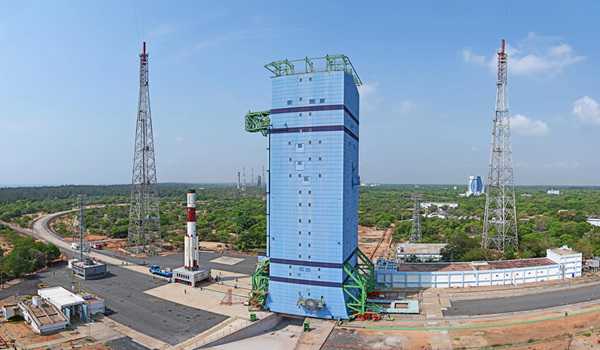Countdown begins for tomorrow's PSLV-C61EOS-09 mission
- Tuesday, 19 May,2025
- 7 comments
Chennai, May 17 (UNI) The 24/25-hr countdown for the Sunday launch of PSLV-C61/EOS-09
mission that would enhance earth observation capabilities and provide high-resolution radar
imagery, especially of India's border regions, began on Saturday morning.
ISRO Sources confimed to UNI that countdown has began.
Whether it is 24 hrs of 25 hrs will be updated, the sources said.
This is ISRO's 101st mission.
The four-stage 44.5 m tall PSLV-C61, with a lift of mass of 321 tonnes, in its 63rd flight,
will take off from the First Launch Pad at 0559 hrs on Sunday morning from the spaceport
of Sriharikota, carrying the earth observation satellite EOS-09, weighing 1,692.24 kg.
Sources said the countdown began this morning, during which propellant filling operations
will be carried in the 4-stage workhorse and reliable launch vehicle of ISRO.
This mission is significant as it would give a big boost to the surveillance in border areas
of India amid Indo-Pak tensions and the Operation Sindoor.
ISRO said "India is set to achieve a significant milestone with the 101st mission of its
space programme."
The mission will place the Earth Observation Satellite into a Sun Synchronous Polar
Orbit (SSPO) at an altitude of about 549 kms.
This is the 27th version of the PSLV-XL configuration and this mission continues
the PSLV's record of delivering reliable performance across a wide range of payloads
and orbits.
After EOS-09 is deployed, Orbit Change Thrusters (OCT) will be used to reduce the
altitude of the PS4 stage, followed by passivation to limit its orbital life — a step aligned
with responsible space operations.
"Subsequent to satellite separation, Orbit Change Thrusters (OCT) will be used to
reduce the orbit altitude of the spent PS4 stage to reduce its life in orbit, followed
by stage passivation", ISRO said.
EOS-09, with a mission lif of five years, is designed to provide continuous and reliable
remote sensing data for operational applications across various sectors.
The entire mission including two orbit change and passivation operations will last
about 6,112 secs.
EOS-09 is a repeat satellite of EOS-04, designed with the mission objective to ensuring
remote sensing data for the user community engaged in operational applications and to
improve the frequency of observation.
The spacecraft is configured using ISRO’s RISAT-1 heritage bus, with most of the functional
requirements of the SAR payload and the bus platform systems derived from the earlier ISRO
missions.
The mission carries a Synthetic Aperture Radar (SAR) payload capable of providing images
for various earth observation application under all-weather condition.
Using an active C-band SAR, it will provide all-weather as well as the day-and-night SAR
observation capability in applications such as agriculture, forestry, soil moisture, geology,
sea ice, coastal monitoring, object identification, and flood monitoring, in addition to military
surveillance.
Adhering to the ISRO’s commitment to the community, the spacecraft will be a debris-free
mission.
A sufficient amount of fuel has been reserved for de-orbiting the satellite after its effective
mission life, lowering it to an orbit that ensures its decay within two years.
UNI GV 0635

